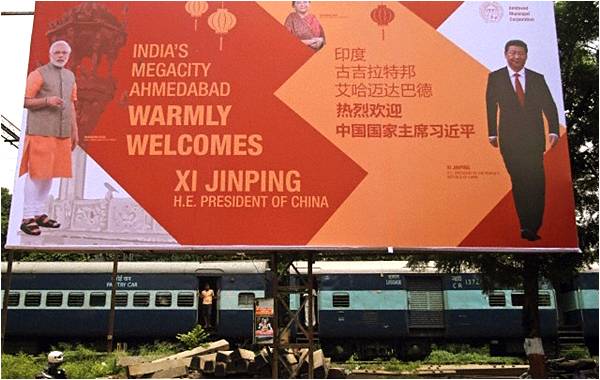
According to the UNCTAD World Investment Report 2014 (WIR), Pakistan stands at number four after India, Iran and Bangladesh as a host country of Foreign Direct Investment among nine countries of South Asia (Iran has also been listed in South Asia by UNCTAD).
But it is not a wise thing to do to compare Pakistan with India in South Asia, because India is a huge country and a diversified economy. India’s investment inflows stand at a staggering $28 billion against Pakistan’s paltry $1.3 billion in 2013 as per UNCTAD WIR 2014. The report says Pakistan’s investment figure showed a rise mainly because of investment in services sector and there was no significant new Greenfield or Brownfield investment in manufacturing industry in the country. But, the report says in 2013, South Asia saw an overall decline by 38% in Greenfield Investments and the figure dropped to $ 24 billion. The only country in South Asia is Sri Lanka, where Greenfield investments showed an upward trend and stood at around $ 1.3 billion.
Pakistan may be compared with the countries like Bangladesh in the region. The subject report reveals that FDI inflows in Bangladesh stood at $ 1.6 billion in 2012 from $ 1.3 billion in 2012, which is a significant growth. Manufacturing accounted for a major part of these inflows in Bangladesh which led to employment creation. Now this is a point of major concern for Pakistan that a country having similar problems like ours like shortage of skilled labour force, overpopulation, energy crisis, etc, has gone ahead of us as far as investment in manufacturing sector is concerned.
Talking about Islamic Republic of Iran, the FDI inflows, mainly directed to oil exploration and production, stood at $ 3 billion.
Looking at India’s FDI trends, it can be seen that everything is not rosy. The UNCTAD report says that although a dominant recipient of FDI in South Asia, the FDI inflows in the shape of mergers and acquisitions from Japan declined considerably, whereas they saw an increase from USA and United Kingdom. Moreover, the report says that the macroeconomic uncertainties in India continued to be of a major concern for foreign investors. The annual rate of GDP growth in India has slowed to around 4 percent and the current account deficit has reached to an unprecedented level- nearly 5% of the GDP. Furthermore, high inflation and a depreciated Indian Rupee also casted serious doubts on FDI prospects in India.
The report further tells us that the poor infrastructure has always been a major hindrance in the growth of FDI is South Asia, but the recently undertaken endeavours for mitigating regional connectivity issues like Bangladesh-China-India-Myanmar Corridor and China-Pakistan economic corridor would prove good to accelerate infrastructure investment in South Asia.

According to the UNCTAD report, Developing Asia remains the number one global investment destination. Obviously the major share has been taken by China and India, but being a major South Asian player, Pakistan must revisit its investment policies and look for an out of box solution to this problem, which may aggravate in the future.
Coming back to the ongoing investment conference mentioned earlier, it may be noted that most of the delegates came from the countries like China, Bahrain, South Korea, Saudi Arabia and Russia. If we now compare Pakistan with India, we see that India is receiving Greenfield Investment and Mergers and Acquisitions from the countries like USA, UK Japan and EU having more efficient operational techniques and management. This is where Pakistan needs to work at: it should go for diversifying its investment inflow sources.
The writer is a Section Officer in the Ministry of Commerce. He may be reached at umerbhatti83@gmail.com
But it is not a wise thing to do to compare Pakistan with India in South Asia, because India is a huge country and a diversified economy. India’s investment inflows stand at a staggering $28 billion against Pakistan’s paltry $1.3 billion in 2013 as per UNCTAD WIR 2014. The report says Pakistan’s investment figure showed a rise mainly because of investment in services sector and there was no significant new Greenfield or Brownfield investment in manufacturing industry in the country. But, the report says in 2013, South Asia saw an overall decline by 38% in Greenfield Investments and the figure dropped to $ 24 billion. The only country in South Asia is Sri Lanka, where Greenfield investments showed an upward trend and stood at around $ 1.3 billion.
Pakistan may be compared with the countries like Bangladesh in the region. The subject report reveals that FDI inflows in Bangladesh stood at $ 1.6 billion in 2012 from $ 1.3 billion in 2012, which is a significant growth. Manufacturing accounted for a major part of these inflows in Bangladesh which led to employment creation. Now this is a point of major concern for Pakistan that a country having similar problems like ours like shortage of skilled labour force, overpopulation, energy crisis, etc, has gone ahead of us as far as investment in manufacturing sector is concerned.
Pakistan must revisit its investment policies and look for an out of the box solution
Talking about Islamic Republic of Iran, the FDI inflows, mainly directed to oil exploration and production, stood at $ 3 billion.
Looking at India’s FDI trends, it can be seen that everything is not rosy. The UNCTAD report says that although a dominant recipient of FDI in South Asia, the FDI inflows in the shape of mergers and acquisitions from Japan declined considerably, whereas they saw an increase from USA and United Kingdom. Moreover, the report says that the macroeconomic uncertainties in India continued to be of a major concern for foreign investors. The annual rate of GDP growth in India has slowed to around 4 percent and the current account deficit has reached to an unprecedented level- nearly 5% of the GDP. Furthermore, high inflation and a depreciated Indian Rupee also casted serious doubts on FDI prospects in India.
The report further tells us that the poor infrastructure has always been a major hindrance in the growth of FDI is South Asia, but the recently undertaken endeavours for mitigating regional connectivity issues like Bangladesh-China-India-Myanmar Corridor and China-Pakistan economic corridor would prove good to accelerate infrastructure investment in South Asia.

According to the UNCTAD report, Developing Asia remains the number one global investment destination. Obviously the major share has been taken by China and India, but being a major South Asian player, Pakistan must revisit its investment policies and look for an out of box solution to this problem, which may aggravate in the future.
Coming back to the ongoing investment conference mentioned earlier, it may be noted that most of the delegates came from the countries like China, Bahrain, South Korea, Saudi Arabia and Russia. If we now compare Pakistan with India, we see that India is receiving Greenfield Investment and Mergers and Acquisitions from the countries like USA, UK Japan and EU having more efficient operational techniques and management. This is where Pakistan needs to work at: it should go for diversifying its investment inflow sources.
The writer is a Section Officer in the Ministry of Commerce. He may be reached at umerbhatti83@gmail.com

